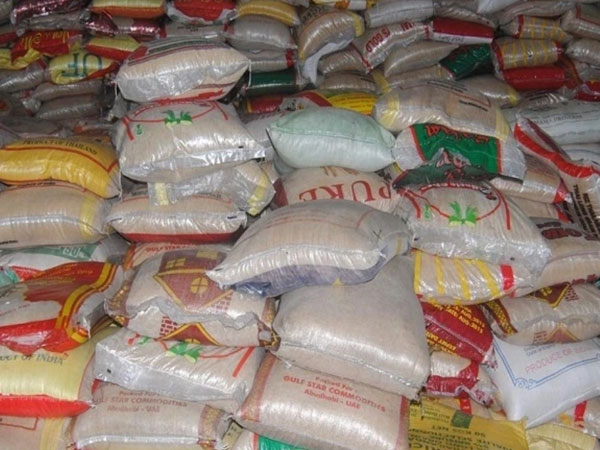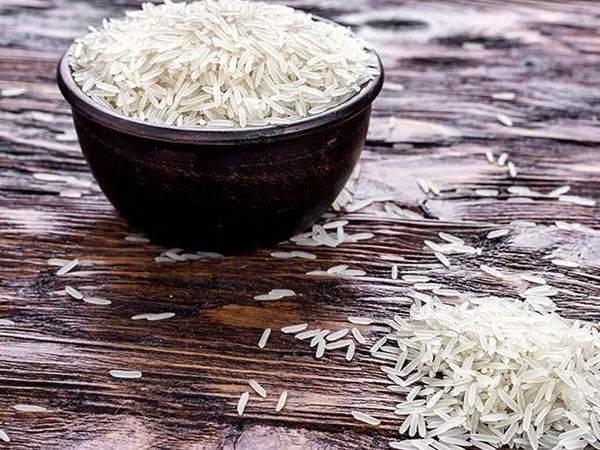 Despite the country’s enviable position as Africa’s biggest rice producer and a leading figure in the commodity production, globally, it also ranks high as the third highest importer of the grain. Regardless of the various interventions targeted at stimulating revolution, especially in local production including the Federal Government’s Anchor Borrowers Programme (ABP); Abuja’s 1.2 million bags of rice pyramid, among other interventions, the industry appears to have defied all dynamics. From N30, 000 in September 2021, the price of a 50kg bag of the commodity has increased massively to an average price of N115, 000 in 2025, taking the commodity, considered as a major staple food in many homes beyond the reach of the common man, GBENGA AKINFENWA writes.
Despite the country’s enviable position as Africa’s biggest rice producer and a leading figure in the commodity production, globally, it also ranks high as the third highest importer of the grain. Regardless of the various interventions targeted at stimulating revolution, especially in local production including the Federal Government’s Anchor Borrowers Programme (ABP); Abuja’s 1.2 million bags of rice pyramid, among other interventions, the industry appears to have defied all dynamics. From N30, 000 in September 2021, the price of a 50kg bag of the commodity has increased massively to an average price of N115, 000 in 2025, taking the commodity, considered as a major staple food in many homes beyond the reach of the common man, GBENGA AKINFENWA writes.
Three months ago, April, to be precise, Nigeria’s parboiled rice market slumped to a near two-year low, as supplies flooded the regional markets, forcing down price of the commodity. This development crashed price of rice, as a 50kg bag dropped from between N80, 000 and N100, 000 to N58, 000 in some parts of the country, particularly in remote areas.
Though the price drop came like a succour to the already-distraught Nigerians, who were battling to survive the economic hardship occasioned, significantly, by the policies of subsidy removal and the unification of the FOREX, their joy was short-lived, as the price suddenly rose to between N80, 000 and N100, 000 in July, forcing many to start seeking alternatives to their main menu.
Considering its position as Africa’s largest rice producer, stakeholders in the industry are worried that the country is still very far from self-sufficiency, taking into consideration all positive variables that should have oiled the attainment of such status.
Regardless of its position as top producer, between 2021 and 2025, the price of a 50kg bag of rice rose by 233 per cent. The Guardian gathered that the price rose from N30, 000 in September 2021 to an average price of N115, 000 as of January 2025.
Though the Federal Government has always claimed increase in local rice production, available information shows that the claim is only on paper, and far from reality. In fact, it was gathered that the country is on the verge of becoming world’s largest importer of the commodity going by the expanding demand gap.
According to the U.S. Department of Agriculture’s (USDA) Rice Outlook report, Nigeria is on track to becoming the world’s leading rice importer. This development places Nigeria at the centre of a global rice trade projected to reach around 52.85 million tons, signaling a significant opportunity for rice exporters, particularly from Asia and other continents.
The import forecast of 2.1 million metric tons by Nigeria underscores the country’s growing appetite for rice, presenting a lucrative market for international suppliers. This burgeoning demand positions Nigeria as a key player in the West African food and beverage market, offering a fertile ground for exporters looking to expand their reach.
This shift in Nigeria’s rice import strategy opens new avenues for exporters from Asia and other regions, who are now looking at West Africa as a promising destination for their products.
With its position as Africa’s biggest rice producer and one of the world’s leading producers, more than half of the rice consumed in Nigeria is produced locally, resulting in a supply deficit of approximately three million metric tons.
Taking into account the availability of the needed resources to be self-sufficient in rice production, reports have it that the produce is cultivated in almost all the states of the federation. In fact, 29 out of 36 states, cultivate rice with the exception of the Federal Capital Territory (FCT), Abuja, yet the country ranks third highest importer of rice with over 2.1 million metric tons imported yearly.
As part of moves to attain self-sufficiency in rice production, the Federal Government, over the years, introduced measures aimed at boosting the capacity of local farmers, but the outcome appears not commensurable with the investments. Some of the policies include bans and restrictions of rice importation, targeting both land borders and seaports.
Why Rice Sustainability Policies Appear Inconsistent
One of the key milestones on rice importation policy was introduced in October 1985 under the President Ibrahim Babangida regime, when the country imposed a ban on rice imports to curb foreign exchange depletion and encourage local production.
On January 2011, government also prohibited rice imports through land borders, restricting entry exclusively to seaports to reduce smuggling and ensure proper duty collection.
Four years after, July 2015 to be precise, a full ban on rice imports was introduced to promote self-sufficiency. However, this was partially lifted in October 2015, allowing imports through land borders upon payment of duties. The policy was reintroduced in March 2016 due to inconsistent enforcement and porous borders, which led to substantial smuggling, eroding government revenue and undermining local production.













© Copyright 2025 The SSResource Media.
All rights reserved.